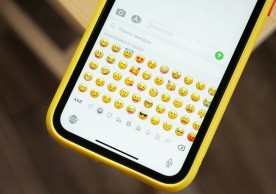NASA News: James Webb Telescope Tests Will Continue Even After Weird Readings
NASA News: James Webb Telescope Tests Will Continue Even After Weird Readings
Jomst C.The National Aeronautics and Space Administration or NASA has announced plans for the continuation of preflight tests on the "James Webb Space Telescope" soon after the spacecraft encountered some problems during a test last year.
The telescope had an unforeseen response to a vibration test last December, making NASA stop the testing until the source of the problem has been found. NASA recently said that there are almost there to finding out what seems to be the problem, and tests should resume sometime this month.
The JWST has been in development for the past 20 years and upon completion, it will be the most powerful space telescope in the history. Last November, the agency announced that the optics for the telescope was completed. But before the telescope can start zooming in on distant galaxies, its parts still needs to pass through series of rigorous tests in the next few years to ensure its readiness for space flight.
The tests will include vibrational and acoustic tests that are meant to simulate conditions that the telescope might experience when launched on an Ariane 5 rocket in less than a couple of years. Although last December 3, the accelerometers attached to the telescope indicated an abnormal response during a vibration test, resulting in the immediate termination of the test.
After that incident, NASA has been trying to decipher why the telescope didn't perform as planned. The agency has successfully performed three low-level vibration tests after that incident, and the team handling the project plans to have a full review and analysis of what transpired before another testing this month.
Deputy project manager for JWST, Paul Geithner stated that to know how things really are, as opposed to how they think they are, tests should be done. The result of the ultrasonic test was positive, it shows that the infrastructure is just fine.
After the stated tests are complete, it will be then sent to Houston for cryogenic testing. The JWST is designed to operate from a million miles away from earth, with a chilling -370 degrees Fahrenheit that is why the agency has to make sure the telescope is ready for extreme temperatures. After Houston, It will then travel to California, for its sun shield installation. Thin layers of materials called Kapton will guard the telescope from the Sun's heat. Then after a small number of remaining tests, it will be sent to French Guiana for its probable launch in 2018.
most read
related stories
more stories from News
-
Samsung Initiates Rollout of AI-Enhanced One UI 6.1 to Galaxy Z Fold 4 Devices
Experience AI-enhanced One UI 6.1 on your Galaxy Z Fold 4. Upgrade now for smarter interactions and enhanced user experience!
ernest hamilton -
Bumble Shifts Dynamics: Women No Longer Required to Make First Move, Introduces Automated Conversation Starters
Bumble's dynamic shift: Women no longer need to make the first move. Explore automated conversation starters and new dynamics!
ernest hamilton -
Latest Leak Unveils Sony Xperia 1 VI Specs: Cameras, Chipset, and Battery Revealed
Discover the latest leaked specs for the Sony Xperia 1 VI, including cameras, chipset, and battery details. Stay updated!
ernest hamilton -
Rabbit R1 Unmasked as Simply an Android App, Rabbit Denies
The Rabbit R1 appears to be just an Android app, despite earlier speculations. Read more about Rabbit's denial.
ernest hamilton -
Google Amps Up Call Experience with Audio Emoji, Including Fart Button
Google introduces a playful twist to calls with audio emojis, including a fart button. Discover the fun!
ernest hamilton -
Insider Leak Reveals Apple's Safari AI Upgrade, Propelling Browser Performance
Discover how Apple's Safari AI upgrade is revolutionizing browsing. Click to stay ahead with the latest tech insights!
ernest hamilton -
Apple Rushes to Resolve Bug Causing iPhone Alarms Silence, Sound Fix Underway
Stay updated on Apple's efforts to fix iPhone alarm silence bug. Read more for the latest on this critical issue!
ernest hamilton -
Google Makes Major Move: Transitioning Fitbit Pay to Google Wallet Across Global Markets
Google transitions Fitbit Pay to Google Wallet worldwide, streamlining payment experiences. Stay informed on this significant development!
ernest hamilton













